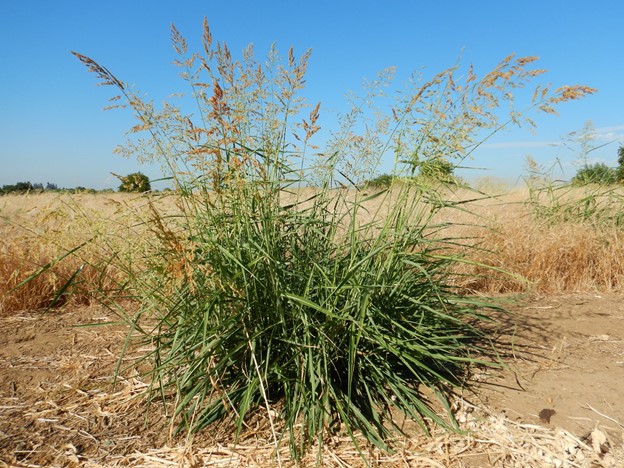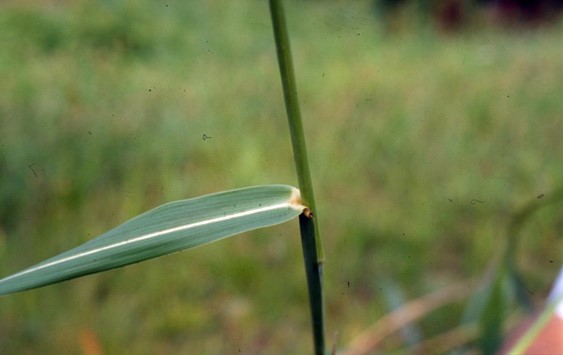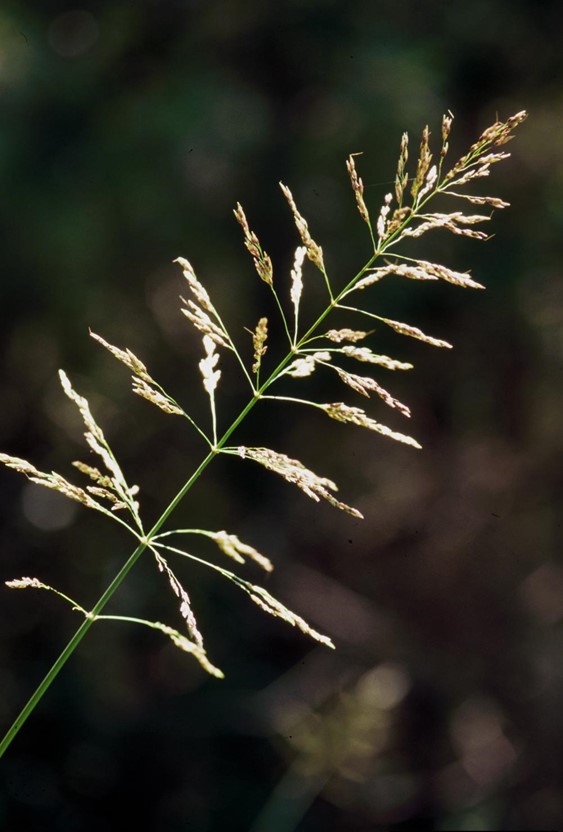Invasive Spotlight: Johnsongrass
(Sorghum halepense)

Johnsongrass is a warm-season perennial grass native to the Mediterranean region of Europe and Africa. In the early 1800s, populations of Johnsongrass were established in the southeast for forage. Today, it can be found in all US states except for Alaska and Maine and is considered invasive through most of the US. Johnsongrass is considered a pioneer species, one of the first species to become established in newly created or recently disturbed sites. It prefers moist areas and can frequently be found in riparian zones.
A large grass with thick, white midribs, Johnsongrass often grows six to eight feet tall. Johnsongrass is a prolific seed producer, able to produce up to 80,000 seeds per single plant. In farm fields, johnsongrass can quickly spread  leading to reduced yields. As a forage grass, livestock, deer, quail, and rodents all will consume a moderate amount of it during its summer growth peak. It has also been used to produce fair-quality hay.
leading to reduced yields. As a forage grass, livestock, deer, quail, and rodents all will consume a moderate amount of it during its summer growth peak. It has also been used to produce fair-quality hay.
Because of its negative economic impact on farming, Johnsongrass is considered by many to be one of the world’s worst invasive weeds. Multiple control methods are utilized to limit its spread and impact. Heavy grazing has

been shown to reduce Johnsongrass when done consistently for two or more years. Herbicides also impact the spread of Johnsongrass but are ineffective at controlling large infestations. A combination of heavy grazing and herbicide is likely the best method at controlling Johnsongrass. Tilling has also been shown to reduce populations but must be done repeatedly to prevent growth stimulation. Tilling may also encourage other undesirable seeds to germinate.
by Amy Keigher, Natural Resources Extension Agent, 2024